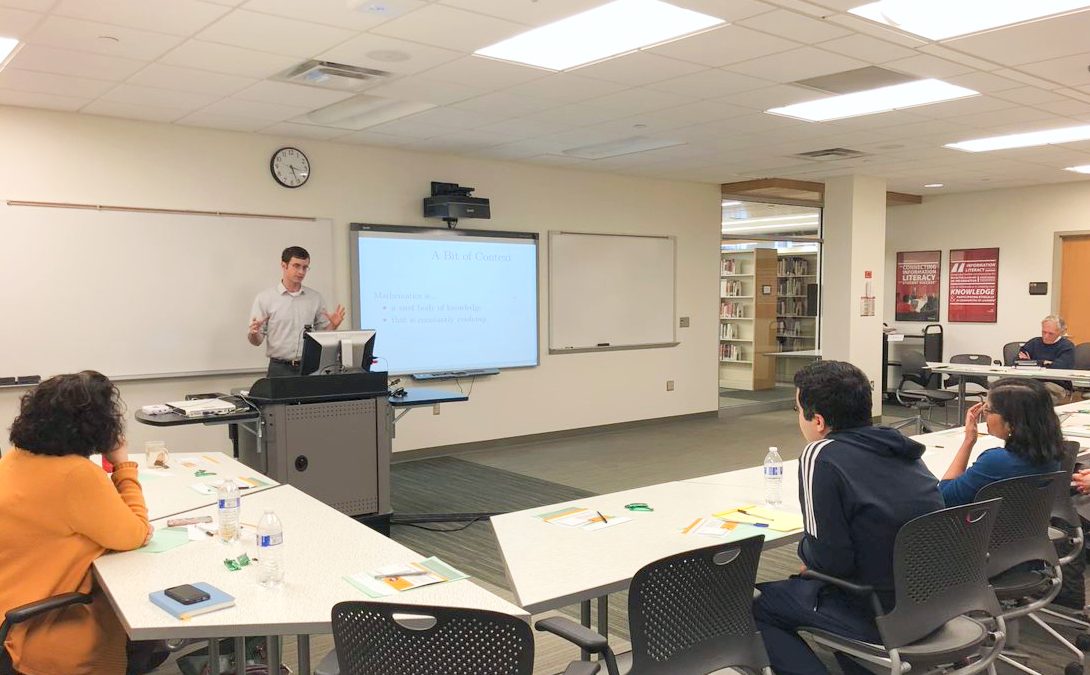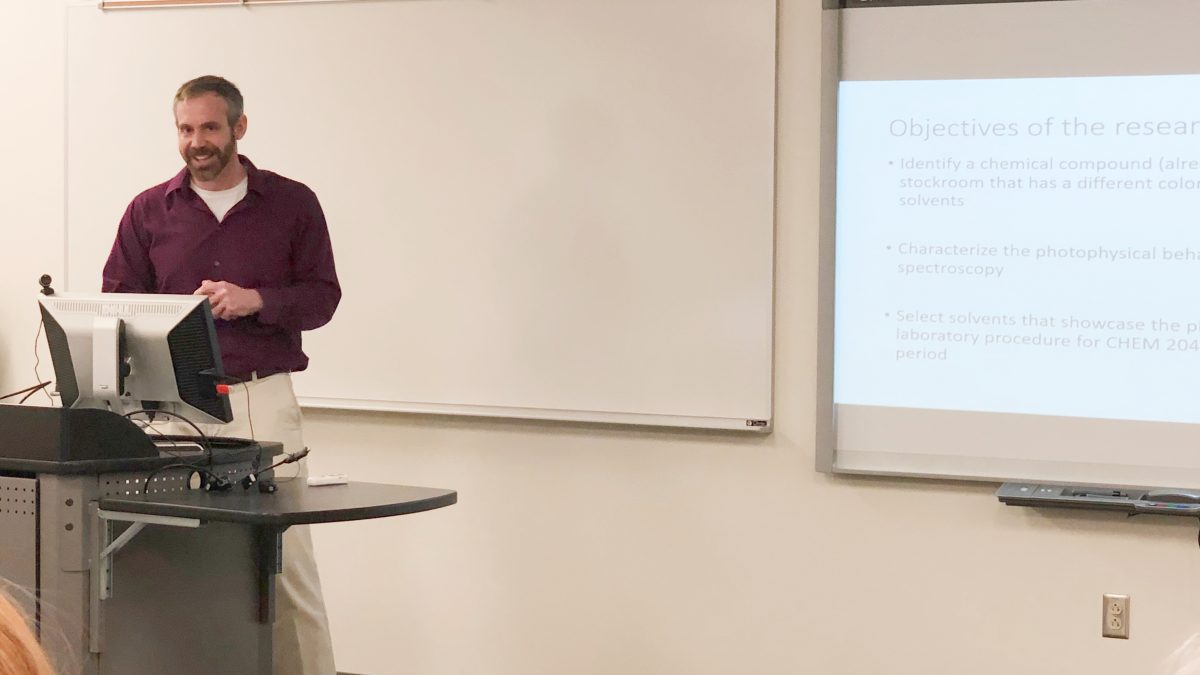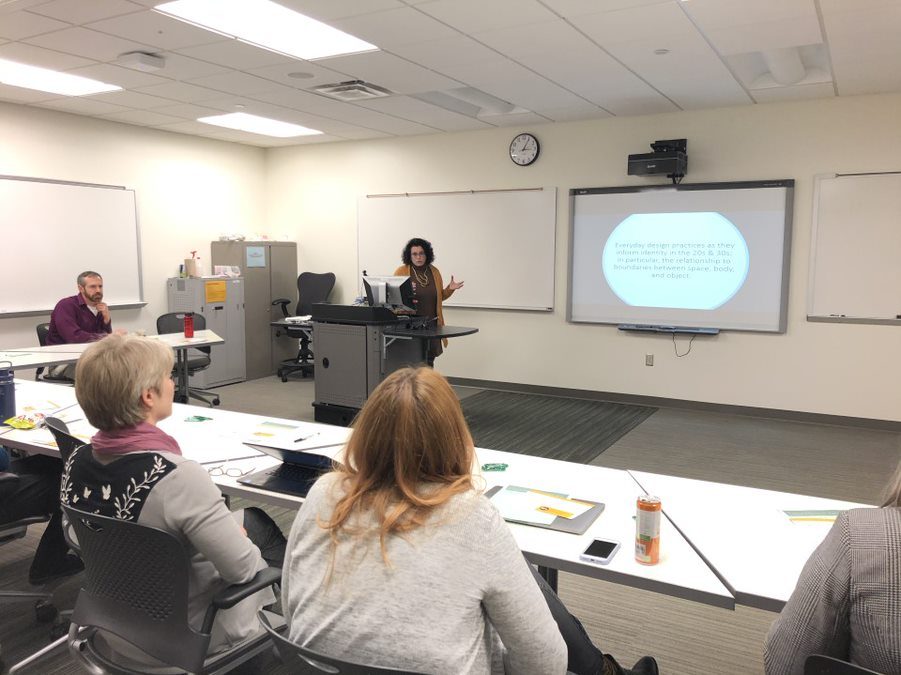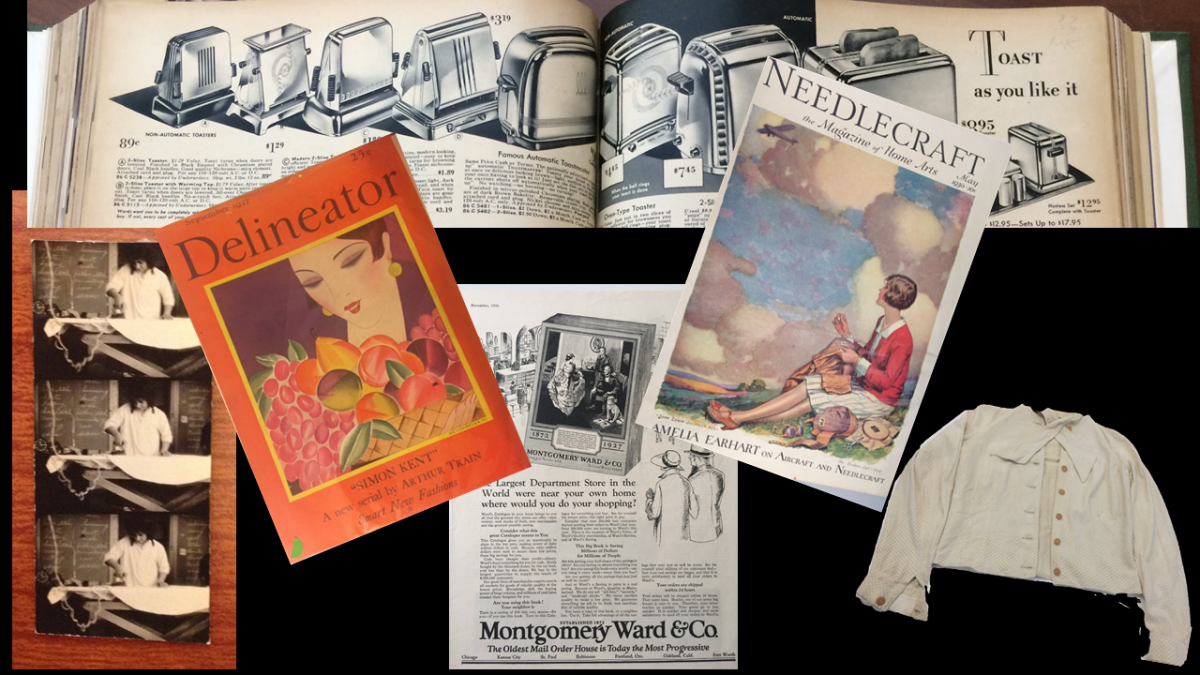The UCBA Library’s 3rd Annual Faculty Research Lightning Talks on March 10, 2020 featured four presenters and their discipline-based research projects via short, 15 minute presentations. In our Meet the Presenters series, each presenter shares some insights into their research project.
David Freeman| Associate Professor of Mathematics| Math, Physics & Computer Science Department
Presentation: Geometry from Symmetry
Research Project
My research has been focused on the concept of symmetry. Here I use the word “symmetry” to denote a way to transform an object into itself (e.g. a reflection or rotation). My goal is to understand all possible objects that admit certain types of symmetries.
Are there any opportunities for cross-disciplinary collaboration with your research? If already cross-disciplinary, are there opportunities to expand it?
Yes, at least to some extent. I am very interested in the philosophy of mathematics, and I am hoping to eventually contribute to the ongoing debate about the ontology of mathematical objects (such as the ones I study). I am also quite interested in mathematically-inspired artwork. I believe there are many opportunities to express mathematical ideas through visual (and other types of) art.
What are your next steps with your research?
My long term goal is to prove a conjecture that has motivated the work I’ve already been doing. This conjecture pertains to the classification of certain mathematical objects that exhibit a high degree of “coarse” symmetry. For all I know the conjecture may end up being false, but I am somewhat optimistic that it is true. I’m not sure if a proof is within reach, but I’m willing to give it a shot. In general, this is the nature of many mathematical research projects: one group of mathematicians will pose a conjecture, and then some other group will prove (or disprove) the conjecture.
Forthcoming Publication
David Freeman, Enrico Le Donne. (Forthcoming). Toward a quasi-Möbius characterization of Invertible Homogeneous Metric Spaces. Revista Matemática Iberoamericana.
By Lauren Wahman





